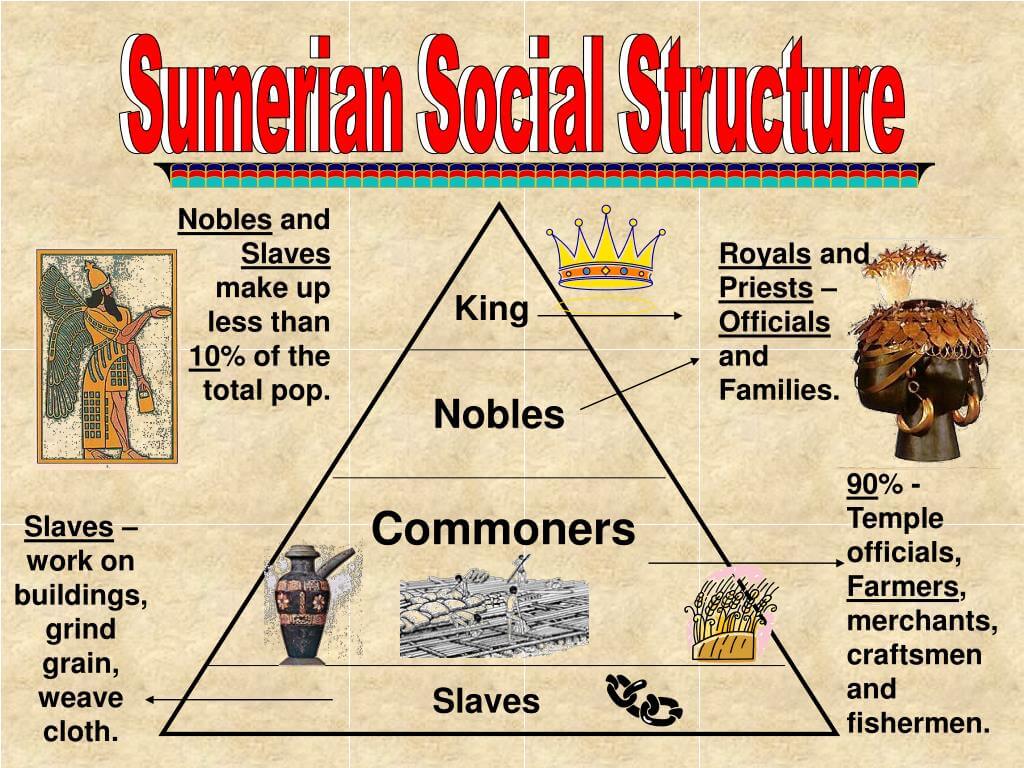Mesopotamia, often referred to as the cradle of civilization, is a region that gave birth to some of the earliest forms of complex society. Its social structure was a tapestry woven from various threads of culture, economy, and politics, presenting a fascinating glimpse into the lives of its inhabitants. Understanding the social hierarchy of Mesopotamia helps illuminate the dynamics of power, wealth, and social interaction that characterized one of history's most significant civilizations.
The social structure of Mesopotamia was not only hierarchical but also diverse, encompassing different classes, professions, and roles that defined the lives of its people. From the ruling elite to the laborers, each group played a crucial role in maintaining the societal framework that allowed for the flourishing of cities like Ur, Babylon, and Assyria. This article delves into the various elements that made up the Mesopotamian social structure, exploring how social stratification influenced daily life and governance.
As we navigate through the complexities of Mesopotamia's social structure, we will uncover the relationships between different social classes, the impact of religion, and the economic factors that shaped the society. This exploration will provide valuable insights into how these ancient peoples organized themselves and interacted with one another, paving the way for future civilizations.
What Are the Main Social Classes in Mesopotamia?
The social structure of Mesopotamia was primarily divided into several distinct classes, each with its own roles and responsibilities. The main social classes included:
- Nobility: This elite class included kings, priests, and high-ranking officials who held significant power and wealth.
- Commoners: Comprised of farmers, artisans, and merchants, commoners made up the majority of the population and were essential to the economy.
- Slaves: Often captured during wars or born into servitude, slaves had few rights and worked in various capacities for their masters.
How Did Religion Influence the Social Structure?
Religion played a pivotal role in shaping the social structure of Mesopotamia. The polytheistic beliefs of the Mesopotamians meant that priests held a position of great authority, acting as intermediaries between the gods and the people. This religious hierarchy included:
- High Priests: They had significant influence and often held political power.
- Temple Priests: Responsible for daily rituals and maintaining the temple.
- Lay Worshippers: Regular citizens who participated in religious practices but did not hold any official role.
What Was the Role of Women in Mesopotamian Society?
The role of women in Mesopotamian social structure varied significantly based on class and region. While women of the nobility enjoyed privileges and could own property, those from lower classes generally had fewer rights. Key aspects of women's roles included:
- Domestic Duties: Most women were responsible for managing the household and caring for children.
- Economic Participation: Some women engaged in trade or owned businesses, particularly in markets.
- Religious Roles: Women could serve as priestesses, holding important religious positions.
What Economic Factors Shaped the Social Structure?
The economy of Mesopotamia was primarily agrarian, with agriculture forming the backbone of society. This economic foundation led to the development of social classes based on wealth and land ownership. Key economic factors included:
- Agricultural Surplus: Enabled the growth of cities and facilitated trade.
- Trade Networks: Connected Mesopotamia with neighboring regions, enriching merchants and traders.
- Craftsmanship: Artisans produced goods that were vital for both local consumption and trade.
How Did the Social Structure Evolve Over Time?
The social structure of Mesopotamia evolved significantly over the centuries, influenced by various factors such as conquests, cultural exchanges, and economic changes. Notable periods of evolution included:
- Early Dynastic Period: Marked the rise of city-states and the establishment of distinct social classes.
- Babylonian Empire: Saw the codification of laws that further defined social roles, such as the Code of Hammurabi.
- Assyrian Empire: Brought about a more rigid social structure with increased militarization and emphasis on loyalty to the king.
What Legacy Did Mesopotamian Social Structure Leave Behind?
The social structure of Mesopotamia has left a lasting legacy that resonates through history. Its systems of governance, legal codes, and social organization influenced subsequent civilizations, including the Greeks and Romans. Key aspects of this legacy include:
- Legal Systems: The concept of codified laws, as seen in the Code of Hammurabi, established a precedent for justice.
- Urban Planning: The development of cities with defined social classes laid the groundwork for modern urban societies.
- Cultural Contributions: Innovations in writing, mathematics, and architecture emerged from this complex social structure.
Conclusion: Understanding Mesopotamia's Social Structure
In conclusion, the social structure of Mesopotamia was a multifaceted system that shaped the lives of its people in profound ways. By examining the various classes, roles, and influences that defined this ancient civilization, we gain valuable insights into the complexities of human society and its evolution over time. The legacy of Mesopotamia's social structure continues to inform our understanding of social dynamics and governance in contemporary societies, reminding us of the intricate tapestry woven by human history.




